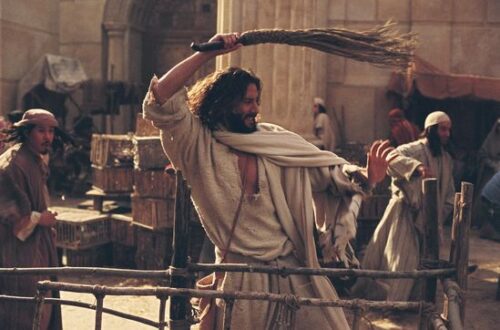The Stick, the Snake and the Son

Just as Moses lifted up the snake in the wilderness, so the Son of Man must be lifted up.
John 3:14
Only by confronting your demons can you ever hope to conquer them.
Ellen Hopkins, Bestseller novelist
Jesus outraged his disciples by confiding in them of his imminent death. Far worse, He has managed to scandalize Christians over the last two millennia by associating his crucifixion to a snake on a stick.
In the Garden of Eden, the snake symbolized Satan, evil and sin. In the desert, snakes traumatized and killed the grumbling people of Israel. In response to their repentant pleas, God ordered Moses to make a bronze snake and lift it up on a stick for all to see. Those who looked at the lifted snake lived.
The snake reappears in the New Testament. In His conversation with Nicodemus, Jesus analogizes the bronze snake to the Son of Man. This sounded heretical and painfully offensive to the theological sensitivities of Jesus’ followers. Is Christ making himself resemble to the Snake – Satan, sin and evil? Is He out of His mind?
Regardless, Jesus’s metaphor is in perfect harmony with New Testament theology.
The bronze snake symbolized God’s judgement for Israel’s sin of thankless grumbling. Jesus’ crucifixion was no different. God poured out his wrath on the crucified Jesus who, at the time, was embodying all the sin and evil of humanity. The scene was so abhorrent that even the Father turned His face away from Jesus.
Let’s unpack the ramifications of sin.
God rendered his first judgement on humans in the Garden of Eden, in response to the first human act of disobedience. His anger, coupled with the ravages of sin continue to torment humanity. The ramifications of the God-free living requested by and granted to humans are devastating at best. They include futile reasoning, depraved minds, darkened hearts and foolishness (Romans 1). Our minds, worldviews, values, emotions and characters have all been warped, leading us to exchange truth with lies. Like sea water, these leave us thirstier than ever and inflict us with lifelong misery. Conditions such as inferiority complexes, fears, anxieties, loneliness and a profound sense of emptiness have haunted humanity since our ancestors’ eviction from the Garden. Many seek relief in alcohol, drugs and opioids, even suicide. Others try to drown their thirst in pleasure or work. The sin-stained broken souls express themselves in hatred, jealousy, deceit, conflicts, and broken relationships, even homicide. Sometimes they disguise themselves in sheep’s clothing such as extreme altruism which can be traced back to one’s love-starved longing for attention and approval.
“What a wretched man I am! Who will rescue me…?” Fortunately, the bronze snake offers the antidote.
Just as the bitten Israelites lived by looking at the snake, we too are saved by gazing at Jesus.
The consequence of sin is spiritual death and the ensuing psychological devastation. The crucified Christ offers forgiveness of sins.
Yet, there is a pre-requisite to post-forgiveness salvation.
In addition to forgiveness we need healing. Salvation involves the life-long, arduous and painful marathon of delivery from the grips of sin and the healing of our wrecked psyches and shattered relationships.
We read this in the book of Hebrews where the author instructs us to “fix our eyes on Jesus” during the marathon of the Christian life of “perseverance.”
In the desert, healing came only to the Israelites who repentantly and desperately looked at the bronze snake. Similarly, only those who are aware of their sin’s ruin; desperately want restoration; and dare to run the marathon of the Christian life will reach the finish line of perfection where Jesus awaits them.
But what do we see on the cross?
Fixing our eyes on the crucified Jesus is an excruciatingly painful experience. The scourging scars, the blood drenched body and the agonizing face of the Son are unimaginably distressful. Yet, the most agonizing aspect of the cross-scene is the abhorring image of our sins carried by the bleeding Christ. The cross punches us with images of all the pain we cause our loved ones. It shows us the carnage of dashed hopes, aspirations and dreams of subordinates, colleagues, and church members left behind by our egos. Looking at the cross we wake up to the disillusionment caused by our worship of money, and all the toys and biological pleasures that this buys. The list is unending.
Looking at Christ on the cross implies confronting all the sin and evil within us and embarking on the life-long clean-up journey.
It implies courageous self-awareness and a genuinely desperate desire for and commitment to disentanglement and healing, bringing us closer to the gradual restoration of our warped worldviews, values, pursuits and habits.
Genuine faith gazes at Christ on the cross and cannot remain indifferent.
This article was published in the Armenian Evangelical Union of North America (AEUNA) Newsletter.


You May Also Like

The Disrupted Disruptor
January 7, 2023
The Tragedy of Wounded Spirits Agonizing Under Unleashed Potentials
February 14, 2023